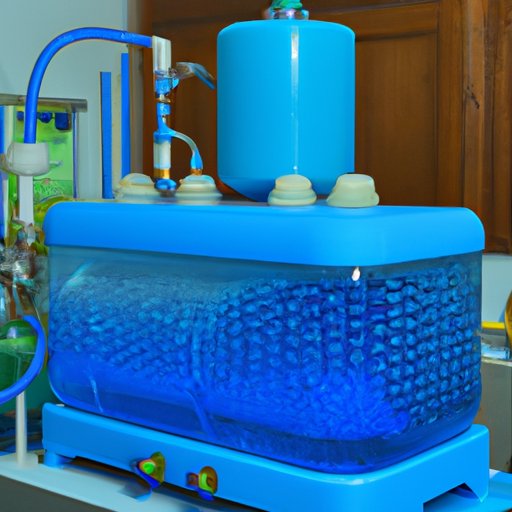Introduction
Well water is water that is drawn from an underground source and is used for drinking, cooking, and other household activities. While well water is often considered to be cleaner than surface water due to its natural filtration process, it can still contain contaminants and impurities such as bacteria, viruses, heavy metals, and chemicals. As such, it is important to ensure that well water is properly purified before using it for drinking or other activities.
Boiling Water
Boiling water is one of the most common methods used to purify well water for drinking. Boiling water has many benefits, including killing off any harmful bacteria, viruses, and parasites that may be present in the water. It also helps to remove unpleasant tastes and odors, and can help reduce the presence of certain chemicals. The process of boiling water is simple – all you need to do is bring the water to a rolling boil for at least one minute.
When boiling well water, there are a few important tips to keep in mind. First, be sure to use a clean pot or container when boiling the water. Second, be aware that boiling water will not remove all contaminants, so make sure to test the water afterwards to ensure that it is safe to drink. Finally, be sure to let the water cool down before drinking it, as drinking hot water can be dangerous.
Distillation
Distillation is another method for purifying well water for drinking. This process involves heating the water until it evaporates, and then collecting the condensed vapor. This condensed vapor is then cooled, which causes it to turn back into liquid form. Distillation is effective at removing most contaminants from water, including bacteria, viruses, heavy metals, and chemicals.
When using distillation to purify well water, it is important to use a high-quality distiller. Additionally, be sure to monitor the distiller while it is running, and check the water after it is distilled to make sure it is safe to drink. Finally, be aware that distillation does not remove dissolved solids, so these should be filtered out prior to distillation.
Filtration
Filtration is another popular method of purifying well water for drinking. This process involves passing the water through a filter, which removes contaminants such as bacteria, viruses, and chemicals. Home filtration systems come in a variety of sizes and types, including countertop filters, whole house filters, and point-of-use filters.
When using filtration to purify well water, it is important to choose the right type of filter for your needs. Additionally, be sure to replace the filter regularly, as this will help ensure that the water is free from contaminants. Finally, be aware that filtration does not remove dissolved solids, so these should be filtered out prior to filtration.
Chlorination
Chlorination is another method of purifying well water for drinking. This process involves adding chlorine to the water, which kills off any bacteria, viruses, and parasites that may be present. Chlorination is also effective at reducing the presence of certain chemicals, such as pesticides and herbicides.
When using chlorination to purify well water, it is important to use the correct amount of chlorine. Additionally, be sure to monitor the water after chlorination to make sure that it is safe to drink. Finally, be aware that chlorination does not remove dissolved solids, so these should be filtered out prior to chlorination.
Reverse Osmosis
Reverse osmosis is a more advanced method of purifying well water for drinking. This process involves forcing water through a semi-permeable membrane, which removes contaminants such as bacteria, viruses, and chemicals. Reverse osmosis is also effective at removing dissolved solids, and can even remove some heavy metals.
When using reverse osmosis to purify well water, it is important to use a high-quality system. Additionally, be sure to monitor the system regularly to make sure that it is working properly. Finally, be aware that reverse osmosis systems require a lot of energy, so it may not be the best option if you are trying to conserve energy.
Conclusion
There are many methods available for purifying well water for drinking, including boiling, distillation, filtration, chlorination, and reverse osmosis. Each of these methods has its own benefits and drawbacks, so it is important to consider the specific needs of your household before choosing a purification method. Additionally, it is important to regularly test the water after purification to ensure that it is safe to drink.
(Note: Is this article not meeting your expectations? Do you have knowledge or insights to share? Unlock new opportunities and expand your reach by joining our authors team. Click Registration to join us and share your expertise with our readers.)
